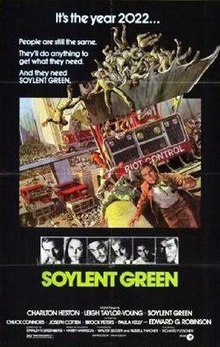Utopian and dystopian fiction are subgenres of speculative fiction that explore social and political structures. Utopian fiction portrays a setting that agrees with the author's ethos, having various attributes of another reality intended to appeal to readers. Dystopian fiction offers the opposite: the portrayal of a setting that completely disagrees with the author's ethos. Some novels combine both genres, often as a metaphor for the different directions humanity can take depending on its choices, ending up with one of two possible futures. Both utopias and dystopias are commonly found in science fiction and other types of speculative fiction.

Charlton Heston was an American actor and political activist. He gained stardom for his leading man roles in numerous Hollywood films including biblical epics, science-fiction films and action films. He won the Academy Award as well as nominations for three Golden Globe Awards, and three Primetime Emmy Awards. He won numerous honorary accolades including the Jean Hersholt Humanitarian Award in 1978, the Golden Globe Cecil B. DeMille Award in 1967, the Screen Actors Guild Life Achievement Award in 1971, the Kennedy Center Honors in 1997, and the Presidential Medal of Freedom in 2003.
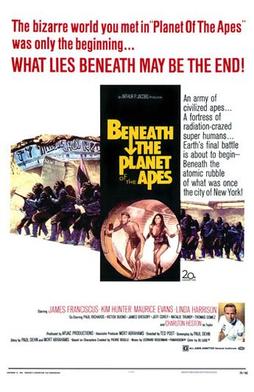
Beneath the Planet of the Apes is a 1970 American science fiction film directed by Ted Post from a screenplay by Paul Dehn, based on a story by Dehn and Mort Abrahams. The film is the sequel to Planet of the Apes (1968) and the second installment in the Planet of the Apes original film series. It stars James Franciscus, Kim Hunter, Maurice Evans, and Linda Harrison, and features Charlton Heston in a supporting role. In the film, another spacecraft arrives on the planet ruled by apes, carrying astronaut Brent (Franciscus), who searches for Taylor (Heston).
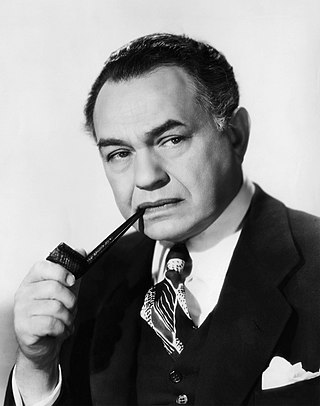
Edward G. Robinson was an American actor of stage and screen, who was popular during Hollywood's Golden Age. He appeared in 30 Broadway plays, and more than 100 films, during a 50-year career, and is best remembered for his tough-guy roles as gangsters in such films as Little Caesar and Key Largo. During his career, Robinson received the Cannes Film Festival Award for Best Actor for his performance in House of Strangers.
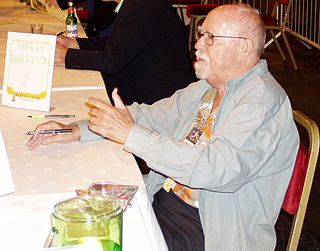
Harry Max Harrison was an American science fiction author, known mostly for his character The Stainless Steel Rat and for his novel Make Room! Make Room! (1966). The latter was the rough basis for the motion picture Soylent Green (1973). Long resident in both Ireland and the United Kingdom, Harrison was involved in the foundation of the Irish Science Fiction Association, and was, with Brian Aldiss, co-president of the Birmingham Science Fiction Group.

Brock Peters was an American actor and singer, best known for playing the villainous "Crown" in the 1959 film version of Porgy and Bess, and Tom Robinson in the 1962 film To Kill a Mockingbird. He made his Broadway debut in the 1965 Norman Rosten play Mister Johnson. He was nominated for a Tony Award and won a Drama Desk Award and an Outer Critics Circle Award for his lead role as Rev. Stephen Kumalo in the 1972 Broadway revival of the musical Lost in the Stars. He received the Screen Actors Guild Life Achievement Award in 1991 and a star on Hollywood Walk of Fame in 1992.

The Omega Man is a 1971 American post-apocalyptic action film directed by Boris Sagal and starring Charlton Heston as a survivor of a pandemic. It was written by John William Corrington and Joyce Corrington, based on the 1954 novel I Am Legend by Richard Matheson. The film's producer, Walter Seltzer, went on to work with Heston again in the dystopian science-fiction film Soylent Green in 1973.

Richard Owen Fleischer was an American film director whose career spanned more than four decades, beginning at the height of the Golden Age of Hollywood and lasting through the American New Wave.
The conspiracy thriller is a subgenre of thriller fiction. The protagonists of conspiracy thrillers are often journalists or amateur investigators who find themselves pulling on a small thread which unravels a vast conspiracy that ultimately goes "all the way to the top." The complexities of historical fact are recast as a morality play in which bad people cause bad events, and good people identify and defeat them. Conspiracies are often played out as "man-in-peril" stories, or yield quest narratives similar to those found in whodunits and detective stories.

Make Room! Make Room! is a 1966 science fiction novel written by Harry Harrison exploring the consequences of both unchecked population growth on society and the hoarding of resources by a wealthy minority. It was originally serialized in Impulse magazine.

The Agony and the Ecstasy is a 1965 American historical drama film directed by Carol Reed and starring Charlton Heston as Michelangelo and Rex Harrison as Pope Julius II. The film was partly based on Irving Stone's 1961 biographical novel of the same name, and deals with the conflicts of Michelangelo and Pope Julius II during the 1508-1512 painting of the Sistine Chapel ceiling. It also features a soundtrack by prolific composers Alex North and Jerry Goldsmith.
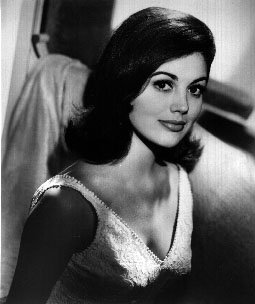
Linda Melson Harrison is an American television and film actress. She played Nova in the science fiction film classic Planet of the Apes (1968) and the first sequel, Beneath the Planet of the Apes; she also had a cameo in Tim Burton's 2001 remake of the original. She was a regular cast member of the 1969–70 NBC television series Bracken's World. She was the second wife of film producer Richard D. Zanuck ; her youngest son is producer Dean Zanuck.

Music for a Slaughtering Tribe is the third release and first full-length album by the German electro-industrial project Wumpscut.

Logan's Run is a 1976 American science fiction action film directed by Michael Anderson and starring Michael York, Jenny Agutter, Richard Jordan, Roscoe Lee Browne, Farrah Fawcett, and Peter Ustinov. The screenplay by David Zelag Goodman is based on the 1967 novel Logan's Run by William F. Nolan and George Clayton Johnson. It depicts a future society, on the surface a utopia, but soon revealed as a dystopia in which the population and the consumption of resources are maintained in equilibrium by killing everyone who reaches the age of 30. The story follows the actions of Logan 5, a "Sandman" who has terminated others who have attempted to escape death and is now faced with termination himself.

Tech-noir is a hybrid genre of fiction, particularly film, combining film noir and science fiction, epitomized by Ridley Scott's Blade Runner (1982) and James Cameron's The Terminator (1984). The tech-noir presents "technology as a destructive and dystopian force that threatens every aspect of our reality".

Planet of the Apes is a 1968 American science fiction film directed by Franklin J. Schaffner from a screenplay by Michael Wilson and Rod Serling, loosely based on the 1963 novel by Pierre Boulle. The film stars Charlton Heston, Roddy McDowall, Kim Hunter, Maurice Evans, James Whitmore, James Daly, and Linda Harrison. In the film, an astronaut crew crash-lands on a strange planet in the distant future. Although the planet appears desolate at first, the surviving crew members stumble upon a society in which apes have evolved into creatures with human-like intelligence and speech. The apes have assumed the role of the dominant species and humans are mute creatures wearing animal skins.

Planet of the Apes is a 2001 American science fiction adventure film directed by Tim Burton from a screenplay by William Broyles Jr., Lawrence Konner, and Mark Rosenthal. The sixth installment in the Planet of the Apes film series, it is loosely based on the 1963 novel of the same name by Pierre Boulle and serves as a remake of the 1968 film version. The film stars Mark Wahlberg, Tim Roth, Helena Bonham Carter, Michael Clarke Duncan, Kris Kristofferson, Estella Warren, and Paul Giamatti. It tells the story of astronaut Leo Davidson (Wahlberg) crash-landing on a planet inhabited by intelligent apes. The apes treat humans as slaves, but with the help of an ape named Ari, Leo starts a rebellion as he seeks to return.

A dystopia, also called a cacotopia or anti-utopia, is a community or society that is extremely bad or frightening. It is often treated as an antonym of utopia, a term that was coined by Sir Thomas More and figures as the title of his best known work, published in 1516, which created a blueprint for an ideal society with minimal crime, violence, and poverty. The relationship between utopia and dystopia is in actuality, not one simple opposition, as many utopian elements and components are found in dystopias as well, and vice versa.

Soylent is a set of meal replacement products in powder, shake, and bar forms, produced by Soylent Nutrition, Inc. The company was founded in 2013 and is headquartered in Los Angeles, California.
